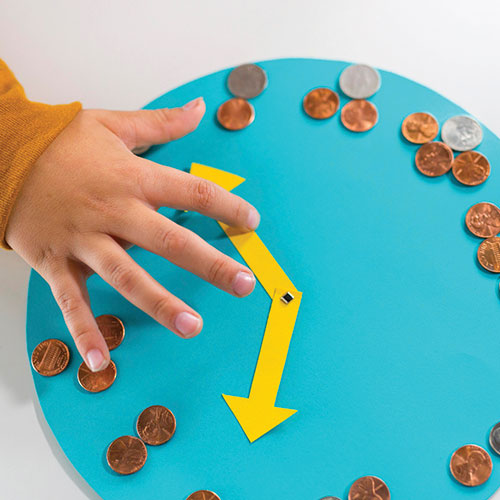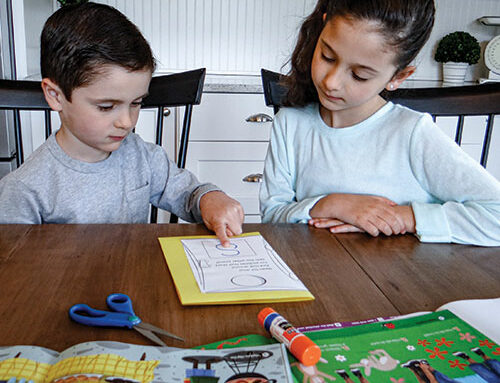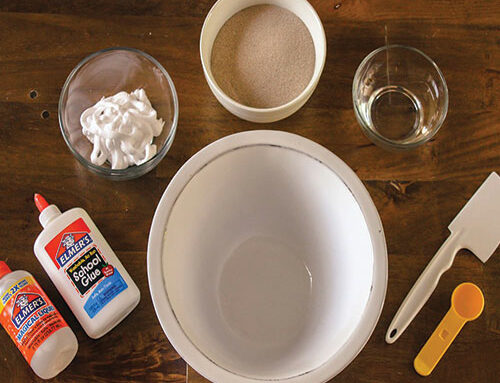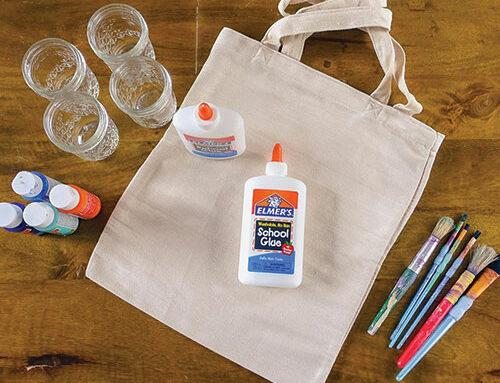Coin-Counting Clock
Kids can learn to tell time and count money with a fun clock.
Supplies Needed
Instructions
- Use the dinner plate to trace a circle onto the 12×12 piece of paper. Use scissors to cut out the circle.
- Draw and cut out arrows from a scrap sheet of paper.
- Attach the arrows to the center of the circle with a brad.
- Count out the coins, using the pennies, nickels, and dimes to represent numbers on the clock. For example, one o’clock is represented by one penny. Six o’clock is represented by a nickel and a penny.
- Glue the coins onto the clock using the Elmer’s Extra-Strength Glue Stick. (If you’re worried that the glue stick isn’t strong enough to hold the coins, don’t worry! It is!)
- All done! Practice moving the hands of the clock and adding up the coins.
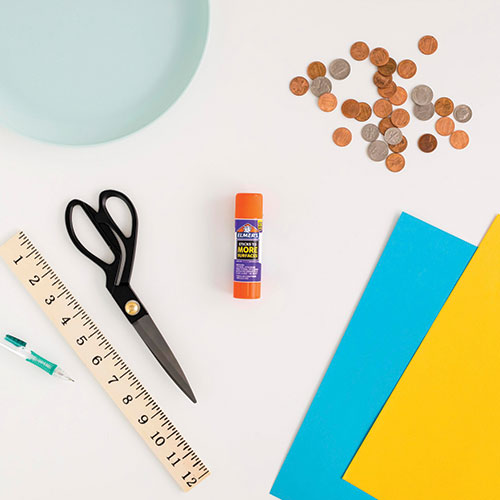
Learn More – STEAM Extensions:
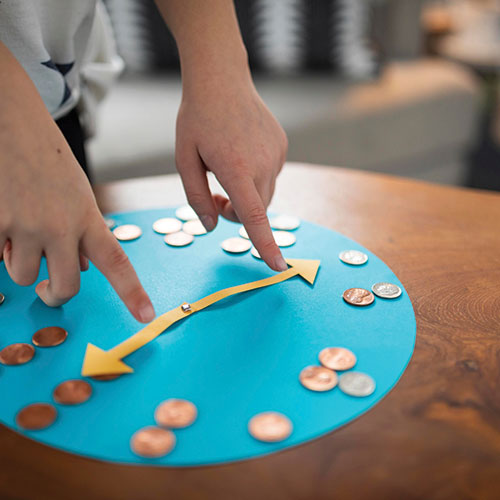
Level-Up – Options for Older Kids:
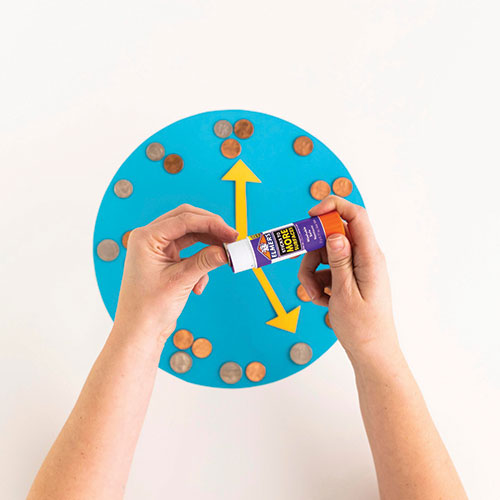
- Coins have possibilities!: How many combinations of coins can you use to create the numbers on your clock? Let’s find out. For example, to make the number 10, you could use one dime, but you could also use two nickels, one nickel and five pennies, or even ten pennies. Go around the clock and see how many different combinations of coins you can use to make the numbers.
- Find the center of the circle: There are lots of methods for finding the center of a circle, but this one is both fun and easy. Draw a chord across the circle. A chord is a straight line that’s drawn near the edge of the circle but doesn’t cross the center. Once you have one chord, draw two more chords in any place on the circle that are the exact same length as your first chord. Now you should have three chords, draw a dot on the exact middle of each chord. Then use the end of your ruler to draw a line from each dot that is exactly perpendicular to each chord. Voila! The place where the three lines intersect is the center of the circle!
- Standards Alignment: Next Generation Science Standards: CCSS.MATH.CONTENT.1.MD.B.3: Tell and write time – Tell and write time in hours and half-hours using analog and digital clocks. CCSS.MATH.CONTENT.2.MD.C.7: Work with time and money – Tell and write time from analog and digital clocks to the nearest five minutes, using a.m. and p.m. CCSS.MATH.CONTENT.2.MD.C.8: Solve word problems involving dollar bills, quarters, dimes, nickels, and pennies, using $ and ¢ symbols appropriately. Example: If you have 2 dimes and 3 pennies, how many cents do you have?
*Adult supervision is required; this project is not appropriate for children under the age of 3 years. Thoroughly wash your hands before and after making and playing with slime. Warning: If large quantities of contact lens solution are accidentally ingested (greater than a tablespoon), get medical attention immediately.
*Some contact solution brands work better than others, check out our Slime Tips section for all the details.
